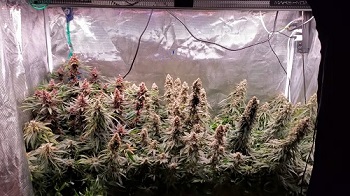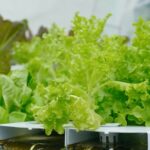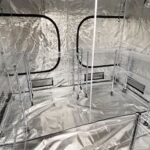If you’re a plant enthusiast, you know that plants need proper lighting to thrive. Inadequate lighting can result in stunted growth, wilting, and even death. That’s why it’s crucial to have the right grow light for your plants. But how do you know which grow light to choose? That’s where the grow light coverage calculator comes in.
In this article, we’ll discuss what a grow light coverage calculator is, why it’s important, and how to use it to calculate the perfect grow light for your plants.
| Grow Light Coverage Calculator | |
|---|---|
| Type of Grow Light | LED, Fluorescent, HID |
| Wattage | 100W, 300W, 600W, etc |
| Coverage Area | 2′ x 2′, 3′ x 3′, 4′ x 4′, etc |
| Plant Type | Seedlings, Vegetables, Flowers, etc |
| Light Cycle | Vegetative, Flowering |
| Recommended Hanging Height | 12″, 18″, 24″, etc |
| Number of Plants | 1, 2, 4, 6, etc |
One of our articles –Grow Tent PH Calculator.
What is a Grow Light Coverage Calculator?
A grow light coverage calculator is a tool that helps you determine the ideal size of grow light you need for your plants. It takes into account the size of your grow space, the type of plants you’re growing, and the intensity of light required for their growth. The calculator uses these factors to calculate the optimal coverage area for your grow light.
Why is a Grow Light Coverage Calculator Important?
Choosing the right grow light for your plants is essential for their health and growth. If your plants don’t receive enough light, they won’t be able to carry out photosynthesis effectively. On the other hand, if they receive too much light, they may become damaged or burned. A grow light coverage calculator helps you avoid these problems by providing you with the optimal coverage area for your grow light. This ensures that your plants receive the right amount of light for their growth and development.
How to Use a Grow Light Coverage Calculator
Using a grow light coverage calculator is easy. Here’s a step-by-step guide to help you calculate the perfect grow light for your plants:
Step 1: Measure your grow space
The first step is to measure the size of your grow space. You can do this by measuring the length, width, and height of the space in feet.
Step 2: Determine the type of plants you’re growing
The type of plants you’re growing is an important factor in determining the intensity of light required. Different plants have different light requirements, so it’s important to choose a grow light that meets those requirements.
Step 3: Determine the light intensity required for your plants
The light intensity required for your plants will depend on the stage of growth they’re in. For example, seedlings require less light than mature plants. A grow light coverage calculator will help you determine the appropriate light intensity for your plants based on their stage of growth.
Step 4: Use the grow light coverage calculator
Once you have all the information, you can use the grow light coverage calculator to determine the optimal coverage area for your grow light. Simply enter the measurements of your grow space, the type of plants you’re growing, and the light intensity required for your plants. The calculator will then provide you with the ideal coverage area for your grow light.
Grow Light Coverage Calculator
One of our articles –Grow Tent EC Calculator.
Factors to Consider When Choosing a Grow Light
When choosing a grow light, there are several factors to consider. Here are some of the most important ones:
Type of Grow Light
There are several types of grow lights available, including LED, fluorescent, and high-intensity discharge (HID) lights. Each type has its own advantages and disadvantages, so it’s important to choose the right one for your plants.
Wattage
The wattage of a grow light refers to the amount of power it uses. Higher wattage lights produce more light, but they also use more energy and generate more heat. It’s important to choose a grow light with the appropriate wattage for your grow space.
Color Spectrum
Plants require different wavelengths of light for their growth and development. A grow light with a full spectrum of colors will provide your plants with all the wavelengths they need. Red and blue spectrums are essential for plant growth, while green spectrums are not necessary.
Coverage Area
The coverage area of a grow light is the amount of space it can effectively cover with light. It’s important to choose a grow light with a coverage area that matches the size of your grow space. A grow light with a coverage area that is too small will not provide enough light for your plants, while a grow light with a coverage area that is too large will waste energy and money.
Durability
It’s important to choose a grow light that is durable and built to last. A high-quality grow light will save you money in the long run by reducing the need for frequent replacements.
Cost
The cost of a grow light is an important factor to consider, but it shouldn’t be the only factor. A high-quality grow light may be more expensive upfront, but it will save you money in the long run by reducing energy costs and the need for frequent replacements.




